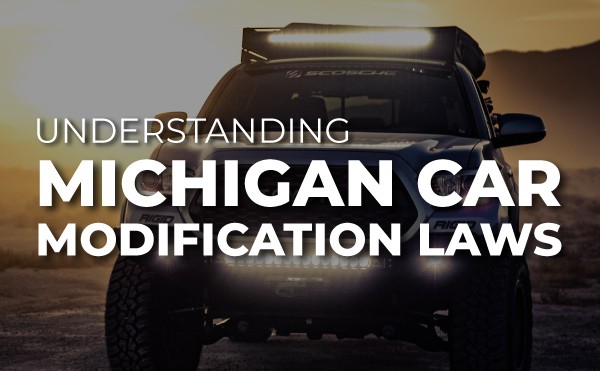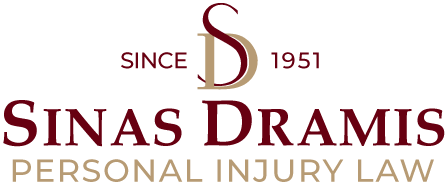Michigan Car Modification Laws – Lighting, Mufflers, Tinting, and More

You might notice cars out on the road with added lighting features, tinted windows, or noisy acceleration. While auto enthusiasts may enjoy having these fancy features on their vehicle, the Michigan Vehicle Code outlines car modification laws that must be followed for the safety of the driver and others out on the road.
Lansing car crash lawyer, Bryan Waldman recently explained some of these regulations regarding vehicle modification on a recent on WLNS 6 Legal Edge segment.
Motor Vehicle Noise Regulations
The Michigan Vehicle Code (Section 257.707c) requires that all cars have mufflers that work properly and do not have holes or leaks. The Code does not permit amplifiers or other modifications designed to increase noise emissions. In general, from 50 feet away the decibels produced by a vehicle cannot exceed:
- 90 decibels when traveling at 35 mph or above
- 86 decibels when traveling at 34 mph or below
- 88 decibels if the vehicle is stationary
Car Modification Laws About Horns
The Michigan Vehicle Code (Section 257.706) requires that vehicles be equipped with a horn that is “in good working order and capable of emitting sound audible under normal conditions from a distance of not less than 200 feet” when the vehicle is in operation. It also expressly states that vehicles should not have a siren, whistle, or bell unless permitted otherwise.
Car Lighting Regulations
Only lights expressly permitted in the Michigan Vehicle Code can be visible while driving. Any additional lights on a car but must be covered or turned off while operating out on the road. These might include neon or colored license plate lights, underbody lighting, interior lights, and flashing, oscillating, or rotating lights.
Are Bright LED Headlights Legal?
According to the Vehicle Code, headlights must emit white light. Therefore, colored LED headlights are not permitted for use on public roadways. Furthermore, the Code requires drivers to turn their high beams off when within 500 feet of an approaching driver. As outlined in the Michigan Vehicle Code (section 257,700), the intensity of white LED headlights must adhere to safety standards so as not to project glaring rays into the eyes of the oncoming driver.
Laws About Tinted Windows
The Michigan Motor Vehicle Code (Section 257.709) prohibits tinted windows on the windshield or front side windows. The only exception to these car modification laws is if the driver has light sensitivity. Drivers with this condition must have a note from a physician or optometrist in their immediate possession while driving. Non-reflective tint can be applied to the top 4 inches of the front windshield and cannot exceed the shade band. Back windows cannot have a solar reflectance of 35% or more. If the back windows are tinted or obstructed, side mirrors adjusted for clear visibility of the road behind the vehicle are required.
Car modification laws exist to ensure everyone’s safety while driving. Loud noises, brightly colored or moving lights, and visibility obstructions can result in distractions to other drivers that could, in turn, lead to car accidents. Make sure that if you decide to modify your vehicle, you understand the car modification laws outlined in the Michigan Motor Vehicle Code and always use reasonable care while driving.

